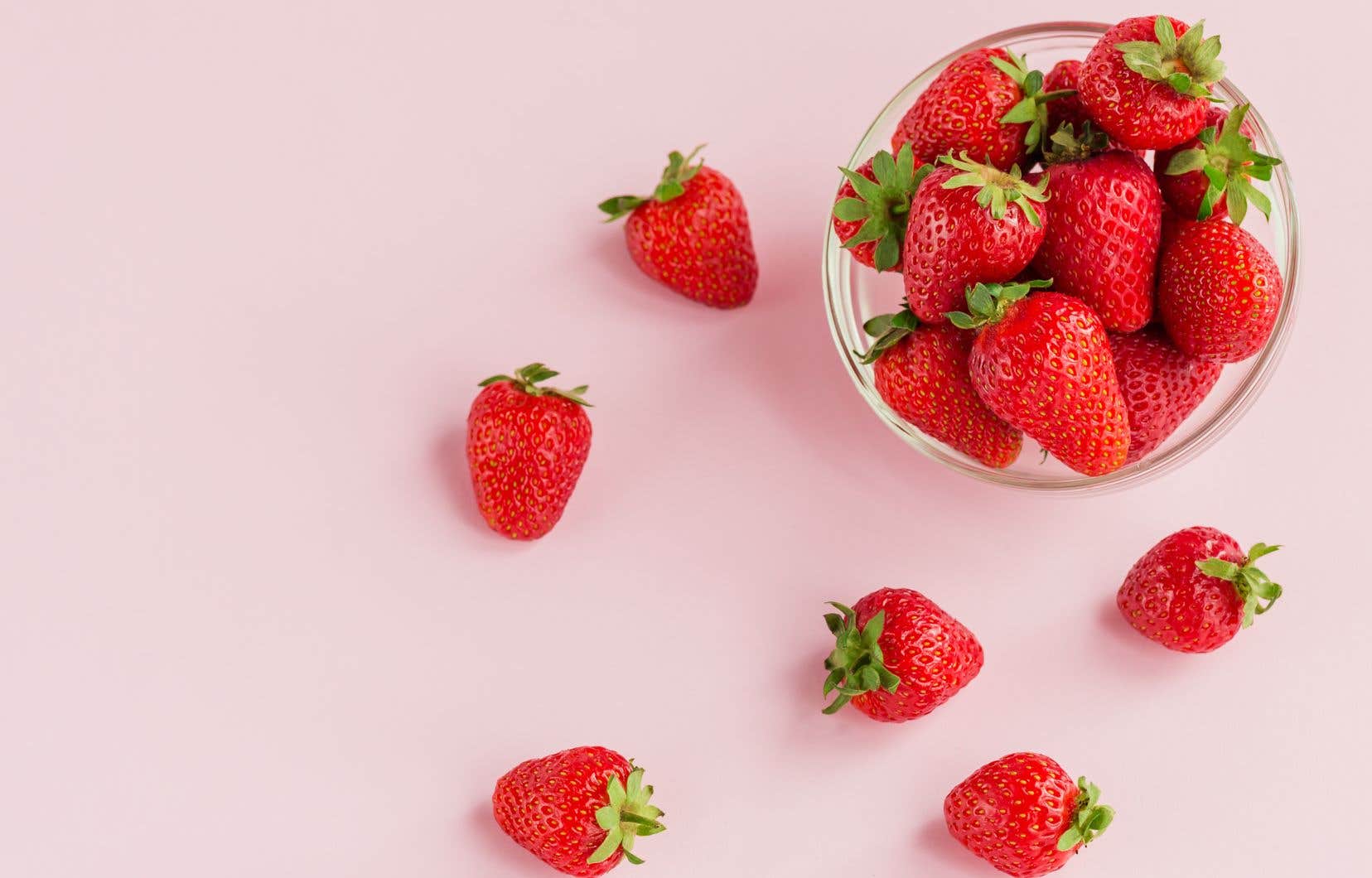This text is part of the special Pleasures notebook
Summer and fall strawberries are popular with consumers here. But now the greenhouse strawberry promises to extend the pleasure of this little fresh fruit all winter long. What future for greenhouse strawberries in Quebec? Portrait of an emerging sector.
There are around thirty farmers producing greenhouse strawberries in Quebec. Large greenhouse growers, whose production is mainly intended for grocery stores, but above all small farms spread across the territory, for whom the greenhouse is just another string to their bow.
“Each producer is a unique case,” explains André Mousseau, president of Producteurs en greenhouse du Québec. There are many new producers who have a large garden, who sell to 200 or 300 families, and who have decided to add a greenhouse to their activities. »
In Vaudreuil, the vertical farm Ferme d’Hiver has developed a way of doing things that allows it to reproduce the sun, rain and wind using state-of-the-art engineering systems. Each year, between October and June, more than 180,000 kilograms of strawberries are grown there. The company expects to be able to replace 10% of strawberry imports into the country by 2025.
Greenhouse Producers and the Association of Strawberry and Raspberry Producers of Quebec view this growth favorably. “It’s positive, because it tells us that there is a demand,” explains Stéphanie Forcier, director of the Association.
A promising culture of the future
André Mousseau knows the criticism sometimes leveled at greenhouse strawberries. He believes that strawberry cultivation is just as justified as tomato cultivation, which dominates Quebec production of greenhouse fruits and vegetables. For him, the potential of greenhouse strawberries is undeniable.
“We have evolved a lot. To reduce the use of pesticides, ten years ago, there were maybe 6 predatory insects that could be put in greenhouses. Today there are 30.”
The biggest challenge remains access to clean and affordable energy sources. Different options are currently being explored by producers. “There is a lot of heat that is lost at the moment and which could be recovered, in a circular economy logic. I have a producer who heats his tomato greenhouses with biogas from a landfill,” he says enthusiastically.
The Legault government also announced on September 12 an additional $9 million to allow greenhouse growers to increase their energy efficiency by connecting their farms to Hydro-Québec’s three-phase networks.
“It’s an initiative consistent with the government’s desire to increase our food autonomy with greenhouses,” underlines Stéphanie Forcier.
An element of a food autonomy strategy
The controlled environment of the greenhouse makes it possible to limit the harmful effects of climate change and to adapt to it.
For André Mousseau, however, it is not because we are in a greenhouse that we are safe. “Climate change brings new challenges for greenhouse producers. If we have three nights online where it is over 20 or 22 degrees in the greenhouse, the plants will not resist. If it rains for a week, the humidity will rise. »
It’s not a question of betting everything on greenhouses either. “I believe in the parallel deployment of a sector for freezing strawberries,” adds Stéphanie Forcier. We always have a surplus of strawberries in high season. We have no structuring project that would allow us to offer consumers anything other than bags of frozen strawberries from Chile or China. »
For now, the Association has no choice but to encourage consumers who want to add frozen strawberries to their winter recipes to stock up on their own in the fall.
Same story with André Mousseau, for whom greenhouse strawberries are not intended to supplant field strawberries.
“In January, when I want a little sunshine, I buy myself a small basket. It’s good for my morale, and it encourages my local producer. Yes, it’s maybe double the price, it’s not something you buy every day, but once in a while, to treat yourself, why not? »
One thing is certain, fresh strawberries (greenhouse and field) have come a long way since the time when they were only available three to four weeks per year.
Greenhouse strawberries in figures
This content was produced by the Special Publications team at Duty, relating to marketing. The writing of the Duty did not take part.
